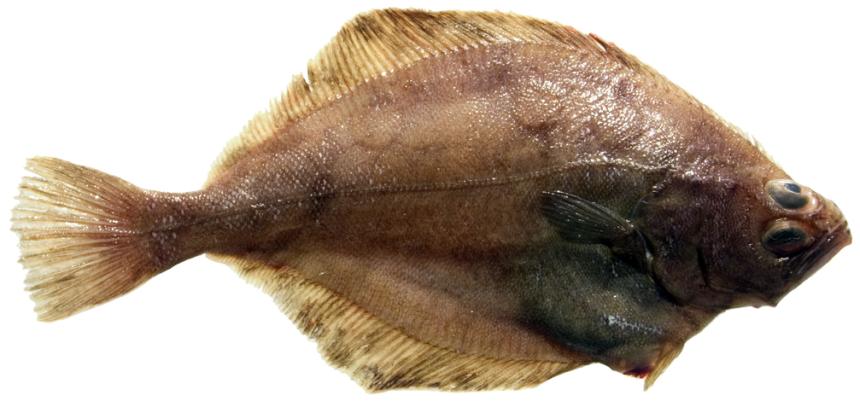Occasionally caught off the Washington coast by commercial harvesters using otter-trawls and longline gear. They are rarely caught by recreational harvesters within Puget Sound.
Description and Range
Physical description
A right-eyed sole with a very flat, oval body shape. The eyed side is dark olive brown to reddish gray-brown, sometimes with dusky blotches. The blind side is white and translucent in places. Both dorsal and anal fins tend to have dusky blotches. This species has an angular caudal fin with the longest rays at the center. The lateral line is nearly straight with a low arch over the pectoral fin and an anterior branch that runs almost to the rear edge of the upper eye; there is no accessory dorsal branch. Flathead sole have a medium to large mouth with one row of sharp conical teeth in both jaws. The eyes are large with a narrow ridge and 1 – 2 rows of scales between them. Pores are present below and behind the lower eye but may be hard to see. This species has a strong anal spine.
The Flathead sole is similar to the Petrale sole but the upper jaw of the Petrale sole has two rows of teeth and the lower jaw has a rounded rear edge.
Flathead sole can grow up to 56 cm (22 in) in length and 1.56 kg (3.4 lbs) in weight. Maximum age is at least 27 years for females and 30 years for males.
Geographic range
Flathead sole range from the Chukchi and Bering Seas and along the Aleutian Islands in the north to Monterey, California in the south. This species lives on soft, silty or muddy bottoms at depths of up to 1,050 m (3,440 ft). It is most commonly encountered from 100 to 247 m (328-810 ft).
